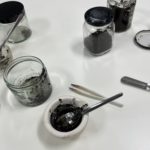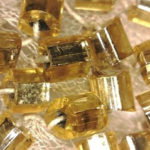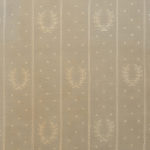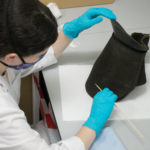Fragile when wet: reflecting on cleaning a viscose rayon dress
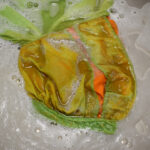
By Bryn Kelley, second year student, MPhil Textile Conservation. One of the first lessons I learned regarding wet cleaning in textile conservation is the importance of considering the fibres present. This came to the fore in my second semester object this year; a 1930s-40s dress with cotton warp and viscose rayon weft from the collection… Continue reading



